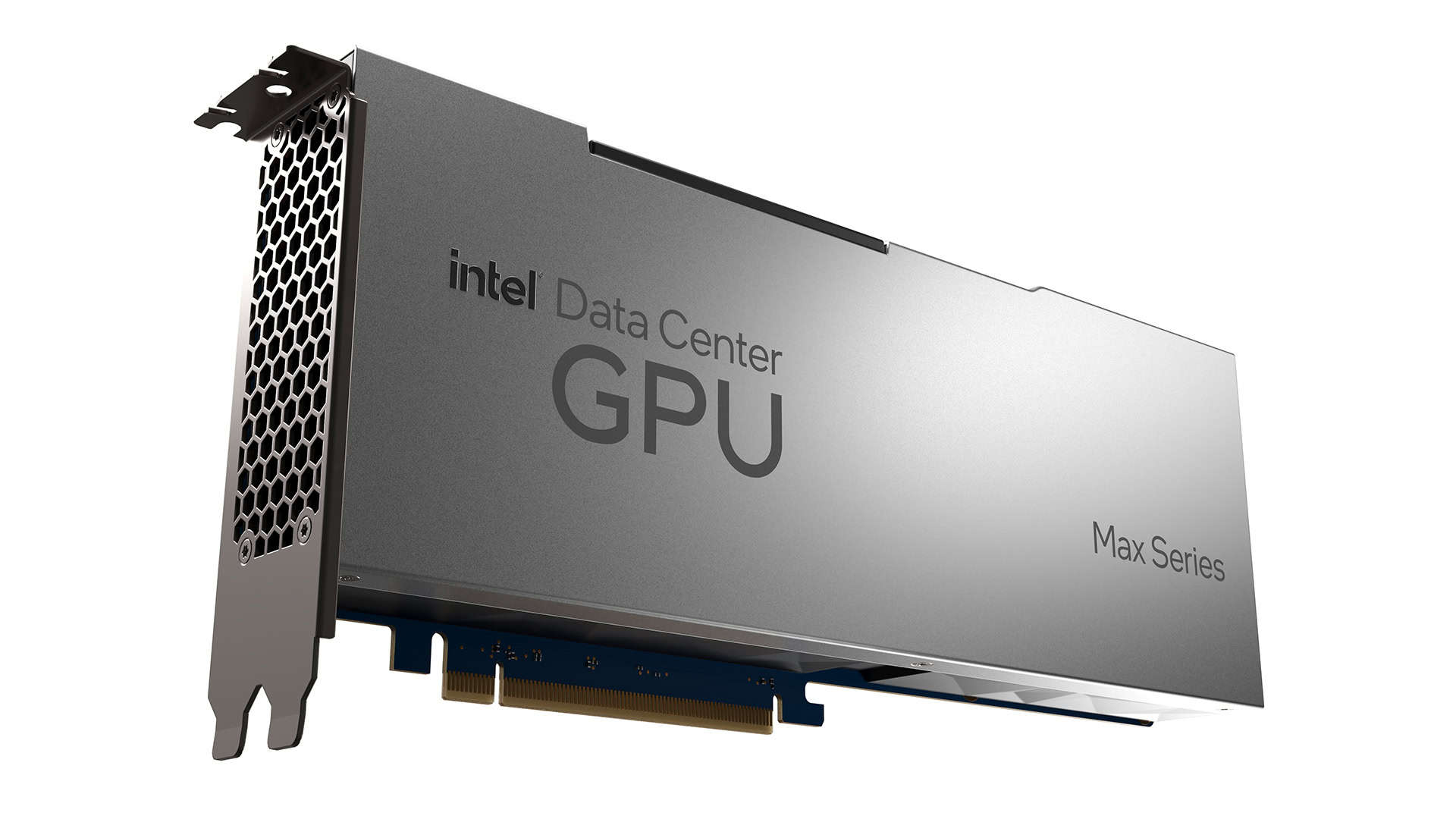Intel’s next-generation Falcon Shores AI GPUs are set to launch in late 2025, marking a significant advancement in the company’s artificial intelligence hardware offerings. These new GPUs aim to deliver substantial performance improvements for AI and high-performance computing workloads, with Intel CEO Pat Gelsinger promising an aggressive product roadmap following the initial release.
The Falcon Shores project represents Intel’s commitment to innovation in the AI hardware space. It combines x86 and Xe GPU cores to create a hybrid processor designed for demanding AI and HPC tasks. This integration of CPU and GPU technologies in a single package could potentially offer unique advantages in terms of performance and efficiency.
Intel’s decision to push forward with Falcon Shores, despite earlier speculation about its future, demonstrates the company’s determination to compete in the rapidly evolving AI chip market. The late 2025 release date gives Intel time to refine the technology and ensure it meets the growing demands of AI applications.

Intel’s Falcon Shores: A Late 2025 Arrival
Intel’s next-generation Falcon Shores AI GPUs are still on track for a late 2025 release, despite some recent uncertainty. This news comes as a relief to those anticipating Intel’s advancements in the AI accelerator market.
A Shift in Strategy
Initially, there were concerns about Falcon Shores’ future due to Intel’s restructuring efforts and a shift in focus towards its x86 architecture. However, Intel has confirmed that Falcon Shores remains a key part of its AI strategy.
Hybrid Architecture
Falcon Shores will feature a hybrid architecture, combining x86 CPU cores with Xe-HPC GPU cores. This approach aims to provide a more versatile and powerful platform for deep learning workloads.
Competition and Expectations
The AI accelerator market is highly competitive, with NVIDIA currently holding a dominant position. Falcon Shores is expected to compete with NVIDIA’s high-end GPUs, offering a compelling alternative for AI training and inference.
Key Features
- High-Bandwidth Memory: Falcon Shores is rumored to utilize high-bandwidth memory (HBM) to provide the massive memory bandwidth required for AI workloads.
- Advanced Packaging: Advanced packaging technologies are expected to be employed to integrate the CPU and GPU cores efficiently.
- Software Ecosystem: Intel is actively developing software and tools to support Falcon Shores, ensuring compatibility and ease of use for developers.
Looking Ahead
While the late 2025 release date seems far off, Intel’s commitment to Falcon Shores signals its ambition in the AI space. The company believes that Falcon Shores will offer a compelling combination of performance, efficiency, and programmability for AI applications. It will be interesting to see how Falcon Shores performs against its competitors when it finally arrives.
Key Takeaways
- Intel’s Falcon Shores AI GPUs are scheduled for release in late 2025
- The new GPUs combine x86 and Xe GPU cores for enhanced AI performance
- Intel plans an aggressive product lineup following the initial Falcon Shores launch
Intel’s Falcon Shores and the AI Hardware Landscape
Intel’s Falcon Shores represents a significant leap in AI and high-performance computing. This next-generation processor aims to reshape the competitive landscape, offering innovations in efficiency and performance.
The Significance of Falcon Shores in Intel’s GPU Portfolio
Falcon Shores marks a pivotal development in Intel’s AI and GPU strategy. This hybrid processor combines x86 and Xe GPU cores, targeting AI and HPC workloads. Set for a late 2025 release, Falcon Shores boasts a modular, tile-based architecture. It supports various data types from FP64 to BF16 and FP8, catering to diverse computational needs.
The processor’s extreme power consumption of 1500W indicates its focus on high-performance scenarios. This positions Falcon Shores as Intel’s flagship offering in the AI hardware space, competing directly with NVIDIA’s advanced GPU solutions.
Comparative Analysis: Intel vs. Nvidia and AMD
Intel’s Falcon Shores enters a fiercely competitive market dominated by NVIDIA and AMD. NVIDIA’s Blackwell AI GPU sets a high bar for performance. AMD continues to advance its CDNA architecture for AI applications.
Falcon Shores’ 1500W TDP surpasses NVIDIA’s current offerings, suggesting potential performance gains. Intel’s integration of Gaudi AI IP into Falcon Shores may provide unique advantages in specific AI workloads.
The processor’s flexible architecture allows for various CPU and GPU combinations. This adaptability could give Intel an edge in addressing diverse customer needs across AI and HPC sectors.
Innovations in Efficiency and Performance
Falcon Shores introduces several key innovations. Its hybrid architecture combines CPU and GPU capabilities on a single package. This integration promises improved data transfer rates and reduced latency for AI workloads.
The use of advanced packaging technologies enhances overall system efficiency. Intel’s move to TSMC’s 3nm process for Falcon Shores production aims to boost performance and power efficiency.
Falcon Shores’ support for multiple data types enables versatile performance across various AI and HPC tasks. This flexibility allows users to optimize workloads for specific precision requirements, potentially leading to significant performance improvements in targeted applications.
Technological Impact and Industry Implications
Intel’s Falcon Shores AI GPUs represent a significant leap in AI and data center technology. These processors promise to reshape computational capabilities and market dynamics in the AI industry.
Integration with AI Software and OneAPI Ecosystem
Intel’s OneAPI ecosystem will play a crucial role in Falcon Shores’ integration. This unified programming model allows developers to optimize code across various Intel hardware, including the new AI GPUs. The ecosystem supports popular AI frameworks and libraries, enabling seamless adoption of Falcon Shores in existing AI workflows.
Falcon Shores’ compatibility with OneAPI will likely boost its appeal to software developers and data scientists. This integration may lead to faster development cycles and more efficient AI model training and inference.
Intel is also focusing on partnerships with major AI software providers. These collaborations aim to ensure Falcon Shores works smoothly with leading AI platforms and tools.
The Future of Data Centers and AI Computation
Falcon Shores GPUs will likely transform data center operations. Their high performance and energy efficiency could lead to more compact and powerful AI computing clusters.
Data centers may need to upgrade their cooling and power systems to accommodate Falcon Shores’ 1500W TDP. This high power draw suggests exceptional computational capabilities, potentially enabling more complex AI models and faster training times.
The new GPUs could also impact edge computing. Their advanced features might allow for more AI processing at the edge, reducing latency in AI applications.
Intel’s focus on AI-specific hardware may lead to specialized data center designs optimized for AI workloads.
Market Forecast and Intel’s Strategic Directions
Intel’s CEO Pat Gelsinger has positioned Falcon Shores as a key part of Intel’s AI strategy. The company aims to compete directly with NVIDIA in the AI chip market.
Market analysts predict significant growth in the AI chip sector. Intel’s entry with Falcon Shores could disrupt current market dynamics dominated by NVIDIA.
Intel’s partnerships with TSMC for chip manufacturing and its investment in advanced process nodes (Intel 20A and 18A) are crucial for Falcon Shores’ success. These moves aim to ensure competitive performance and power efficiency.
The company’s strategy also involves diversifying its AI portfolio. Alongside Falcon Shores, Intel continues developing its Habana Labs’ Gaudi line of AI accelerators, offering customers a range of AI solutions.
Frequently Asked Questions
Intel’s upcoming Falcon Shores AI GPUs have generated significant interest in the tech industry. These questions address key aspects of the new hardware.
What are the expected advancements in Intel’s Falcon Shores AI GPUs compared to their previous generations?
Falcon Shores AI GPUs will combine x86 and Xe GPU cores. This hybrid architecture aims to boost performance for AI and high-performance computing workloads. Intel plans to offer substantial improvements in processing power and efficiency over current GPU offerings.
Which industries are likely to benefit the most from the late-2025 release of Intel’s Falcon Shores AI GPUs?
Data centers and research institutions will likely see major benefits from Falcon Shores. The increased processing power suits complex AI models and scientific simulations. Cloud service providers may also leverage these GPUs to enhance their AI-as-a-service offerings.
How does Intel plan to ensure compatibility with existing AI frameworks for the Falcon Shores AI GPUs?
Intel typically works closely with software developers to optimize AI frameworks. The company will likely provide updated libraries and drivers to ensure Falcon Shores GPUs work seamlessly with popular AI tools and platforms.
What power efficiency improvements are anticipated in the Falcon Shores AI GPUs?
Falcon Shores GPUs are expected to have a high power draw of up to 1500W. Despite this, Intel aims to improve performance-per-watt metrics. The company will likely implement advanced cooling solutions and power management features to balance performance and efficiency.
Can we expect any strategic partnerships or collaborations from Intel for the rollout of their next-gen Falcon Shores AI GPUs?
Intel often collaborates with hardware manufacturers and software companies for new product launches. Partnerships with server manufacturers, cloud providers, and AI software developers are probable. These collaborations help ensure a smooth integration of Falcon Shores into existing ecosystems.
What are the predicted implications of Intel’s Falcon Shores AI GPUs on the AI and machine learning landscape?
Falcon Shores GPUs could accelerate AI model training and inference times. This may enable more complex AI applications across various fields. The new hardware might also influence AI software development, encouraging optimization for Intel’s architecture.







